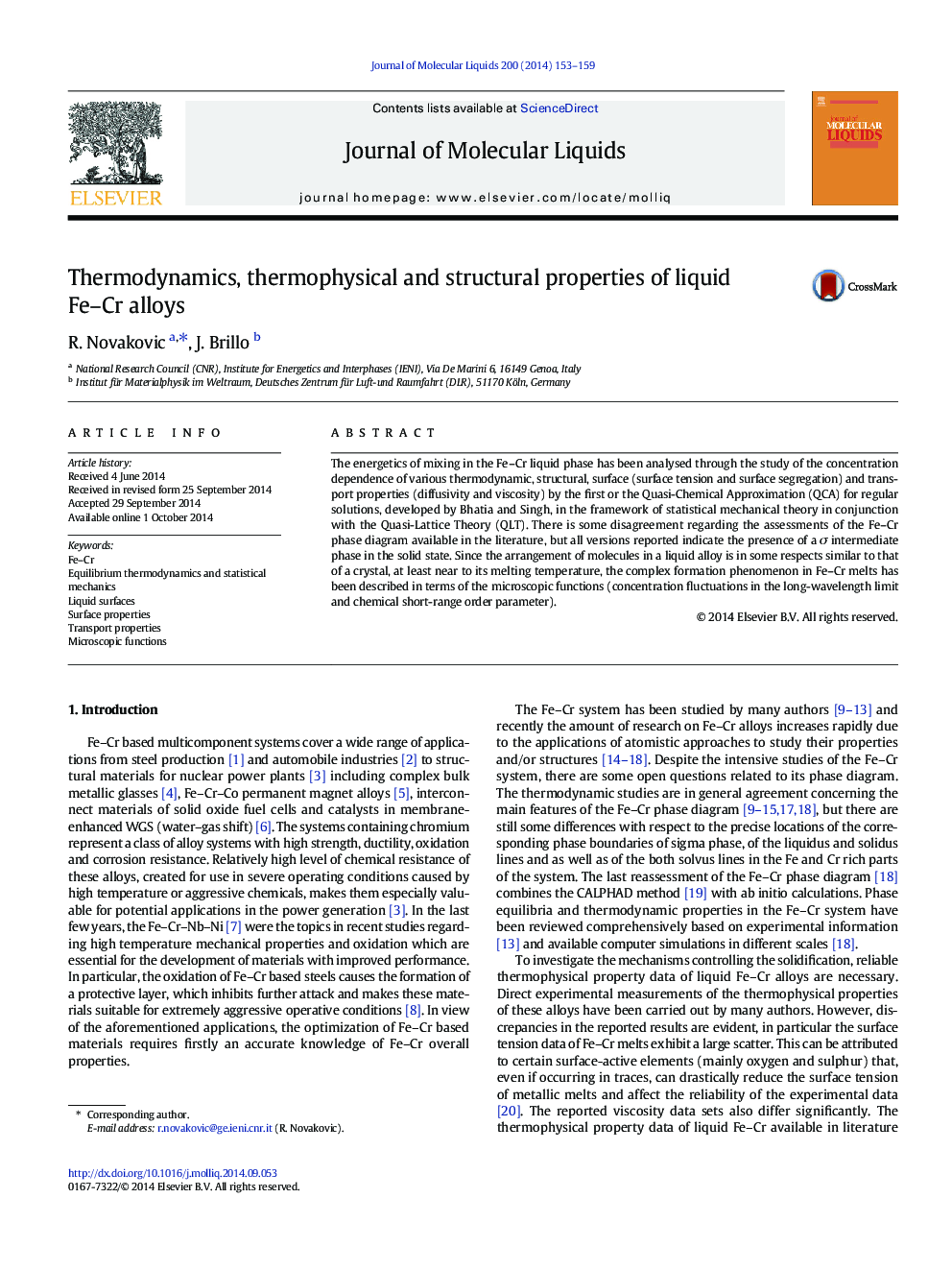| Article ID | Journal | Published Year | Pages | File Type |
|---|---|---|---|---|
| 5411109 | Journal of Molecular Liquids | 2014 | 7 Pages |
Abstract
The energetics of mixing in the Fe-Cr liquid phase has been analysed through the study of the concentration dependence of various thermodynamic, structural, surface (surface tension and surface segregation) and transport properties (diffusivity and viscosity) by the first or the Quasi-Chemical Approximation (QCA) for regular solutions, developed by Bhatia and Singh, in the framework of statistical mechanical theory in conjunction with the Quasi-Lattice Theory (QLT). There is some disagreement regarding the assessments of the Fe-Cr phase diagram available in the literature, but all versions reported indicate the presence of a Ï intermediate phase in the solid state. Since the arrangement of molecules in a liquid alloy is in some respects similar to that of a crystal, at least near to its melting temperature, the complex formation phenomenon in Fe-Cr melts has been described in terms of the microscopic functions (concentration fluctuations in the long-wavelength limit and chemical short-range order parameter).
Keywords
Related Topics
Physical Sciences and Engineering
Chemistry
Physical and Theoretical Chemistry
Authors
R. Novakovic, J. Brillo,
